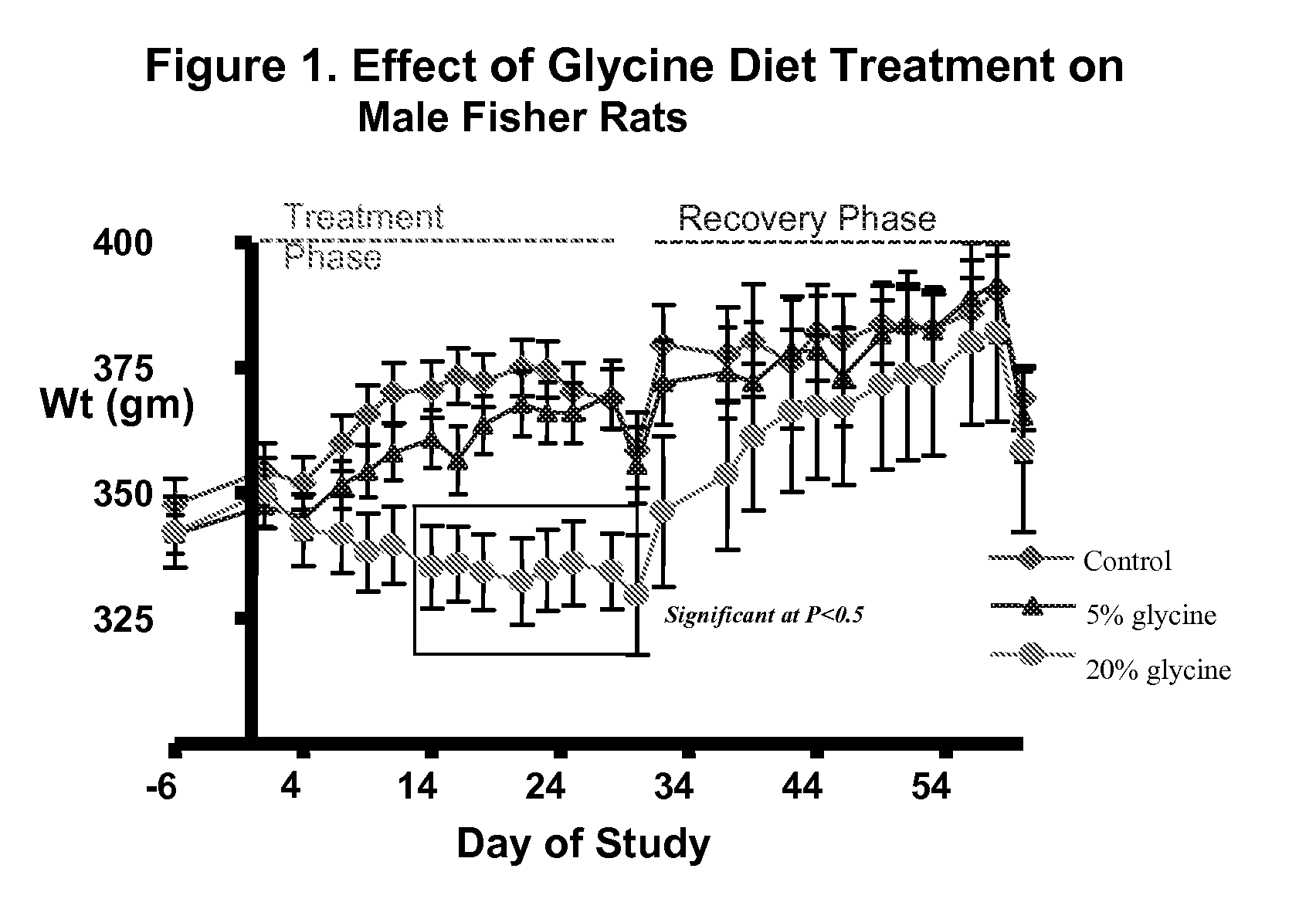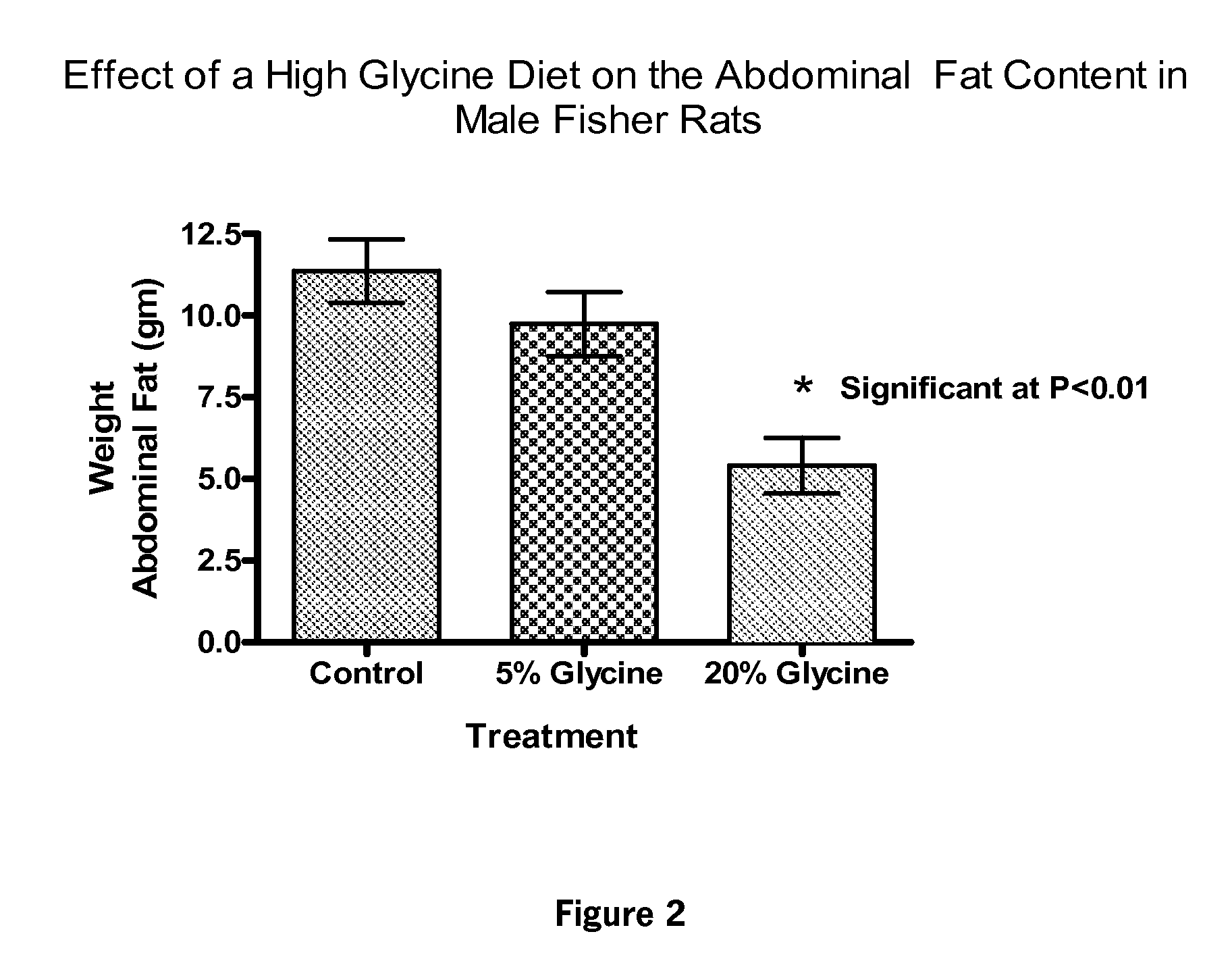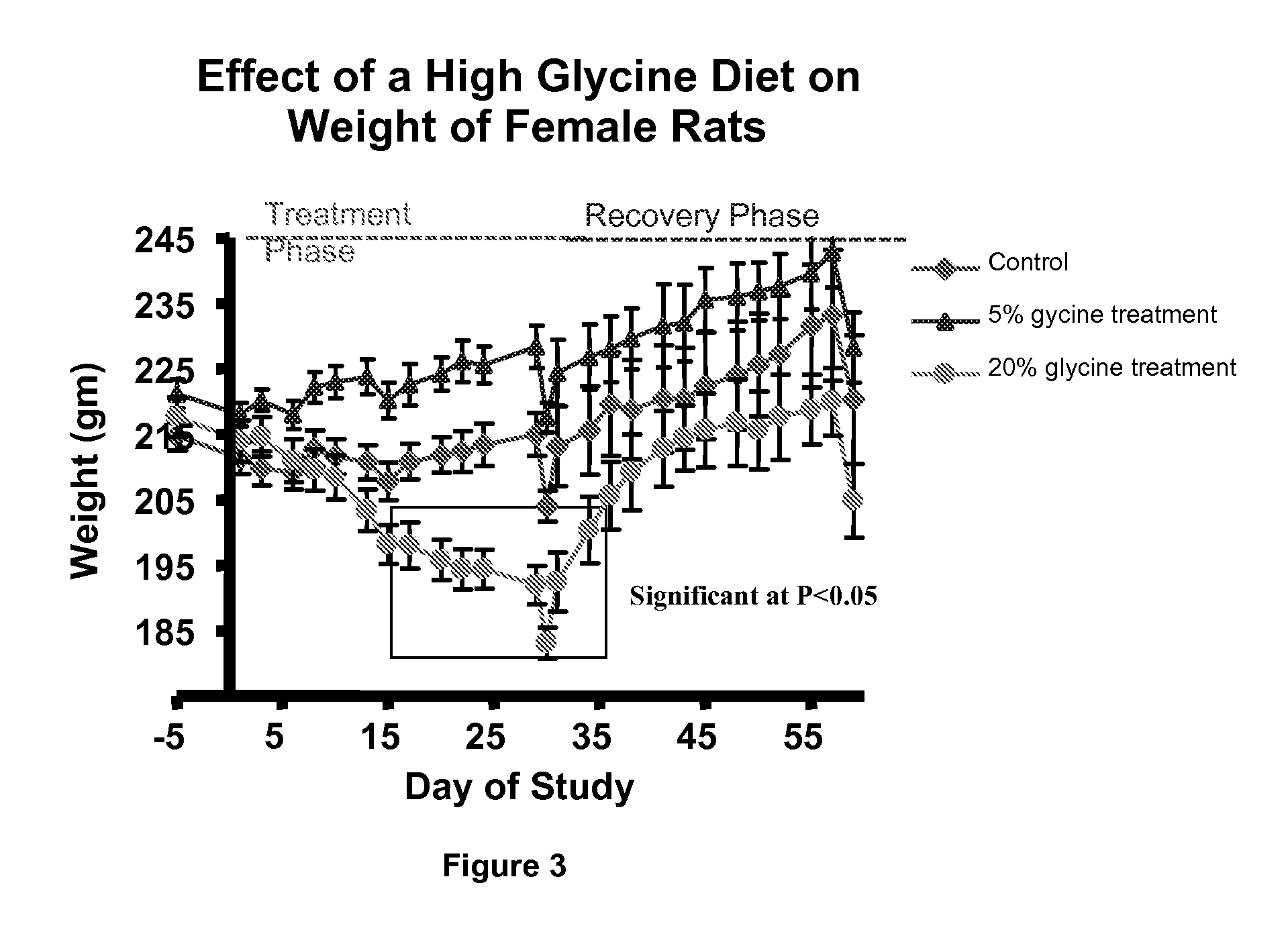Methods of Treating Lipomas and Liposarcomas
a liposarcoma and lipomas technology, applied in the field of lipomas and liposarcomas, can solve the problems of 300,000 deaths annually, predicted to worsen, dim prospects, etc., and achieve the effect of reducing white adipose tissu
- Summary
- Abstract
- Description
- Claims
- Application Information
AI Technical Summary
Benefits of technology
Problems solved by technology
Method used
Image
Examples
example 1
[0088]Rats were randomly divided, caged separately, and fed water ad libitum and diet TD 80406 diet (Harlan Teklad, Madison, Wis.). The diet composition is shown in Table 1. The TD 80406 diet has about 1-2% glycine present in the lactalbumin component and is considered a non-supplemented diet.
TABLE 1TD 80406 Dietg / kgLactalbumin (New Zealand Milk Products)200.0Corn Starch620.0Powdered Confectioners Sugar50.0Cottonseed Oil30.0Cellulose60.0Mineral Mix, MIT 200 (Teklad TD 70191)30.0Vitamin Mix, (Teklad 40060)10.0
[0089]Adult (180 day old) male Fisher rats were randomly assigned in treatment groups of 10 rats in each group to diets comprising 5% or 20% glycine in their feed or a non-supplemented diet. See FIG. 1. Animal and food weight measurements were obtained on the indicated day of the study. The analyst undertaking the weight measurement was blinded relative to the diet of the animal for which the observation was being recorded. The bars represent ±1 standard error of the weights of ...
example 2
[0094]Adult male Zucker diabetic fatty (ZDF) rats were randomly assigned in treatment groups of 3 rats in each group to diets comprising 20% glycine in their feed or a non-supplemented diet. ZDF rats are obese, hyperlipidemic, and insulin resistant. Weight measurements were obtained on the indicated day of the study. See FIG. 6. The analyst undertaking the weight measurement was blinded relative to the diet of the animal for which the observation was being recorded. The bars represent ±1 standard error of the weights of the rats in each group on the indicated observation day. Data was analyzed using a One-Way Analysis of Variance and subjected to post-hoc analysis using Dunnett's Multiple Comparison Test. Rats fed a 20% glycine diet had statistically significant decrease in weight from day 15 through day 36 of the study relative to rats fed a non-supplemented diet. Again, no difference was observed between groups in food consumption. Measurements of the abdominal fat content of each...
example 3
[0095]Adult female Sprague-Dawley rats were randomly assigned in treatment groups of 3 rats in each group to diets comprising 5, 10, 15, or 20% glycine in their feed or a non-supplemented diet. See FIG. 8. Weight measurements were obtained on the indicated day of the study. The analyst undertaking the weight measurement was blinded relative to the diet of the animal for which the observation was being recorded. The bars represent ±1 standard error of the weights of the rats in each group on the indicated observation day. The weights of the rats fed a 20% glycine diet were less than that of the rats fed a non-supplemented diet. Data was analyzed using a One-Way Analysis of Variance and subjected to post-hoc analysis using Dunnett's Multiple Comparison Test. Rats fed a 20% glycine diet had statistically significant decrease in weight from day 15 through day 36 of the study relative to rats fed a non-supplemented diet.
PUM
| Property | Measurement | Unit |
|---|---|---|
| concentration | aaaaa | aaaaa |
| concentration | aaaaa | aaaaa |
| concentration | aaaaa | aaaaa |
Abstract
Description
Claims
Application Information
 Login to View More
Login to View More - R&D
- Intellectual Property
- Life Sciences
- Materials
- Tech Scout
- Unparalleled Data Quality
- Higher Quality Content
- 60% Fewer Hallucinations
Browse by: Latest US Patents, China's latest patents, Technical Efficacy Thesaurus, Application Domain, Technology Topic, Popular Technical Reports.
© 2025 PatSnap. All rights reserved.Legal|Privacy policy|Modern Slavery Act Transparency Statement|Sitemap|About US| Contact US: help@patsnap.com



